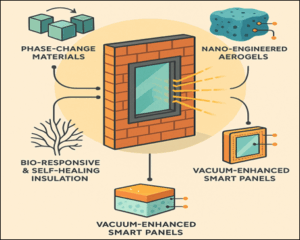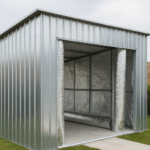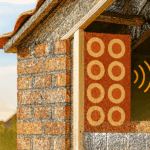As the world races toward carbon neutrality and intelligent infrastructure, one of the most overlooked components of modern design is undergoing a revolutionary transformation: insulation. By 2050, insulation will no longer be a silent, passive layer buried behind walls. It will evolve into an intelligent, adaptive system—capable of sensing its environment, responding dynamically, and optimizing energy performance with precision.
Welcome to the era of Smart Insulation Materials.
The Shift Toward Intelligent Insulation
Future insulation must be adaptive, responsive, and sustainably engineered.
Innovations in nanotechnology, biotechnology, and artificial intelligence are converging to create insulation solutions that think, sense, and react in real time.
By 2050, insulation will act more like a living system than a static construction element.
Emerging Smart Insulation Technologies

Environmental & Economic Impact
Smart insulation offers benefits well beyond temperature control:
- Supports net-zero and carbon-negative goals
- Reduces dependence on fossil-fuel heating/cooling
- Minimizes maintenance through self-diagnosing/self-healing capabilities
- Delivers long-term cost savings from energy optimization
- Improves indoor comfort and environmental stability
Looking Ahead: Insulation as Intelligent Skin
By 2050, insulation will evolve into a dynamic, intelligent skin—a smart protective layer that breathes, senses, and adapts.
Whether in next-generation smart cities, carbon-neutral factories, autonomous vehicles, or off-planet habitats on Mars, smart insulation will redefine how humans manage heat, cold, and energy itself.
The future of insulation is not just efficient—it’s alive, adaptive, and central to global sustainability.
~Sai Kiran





